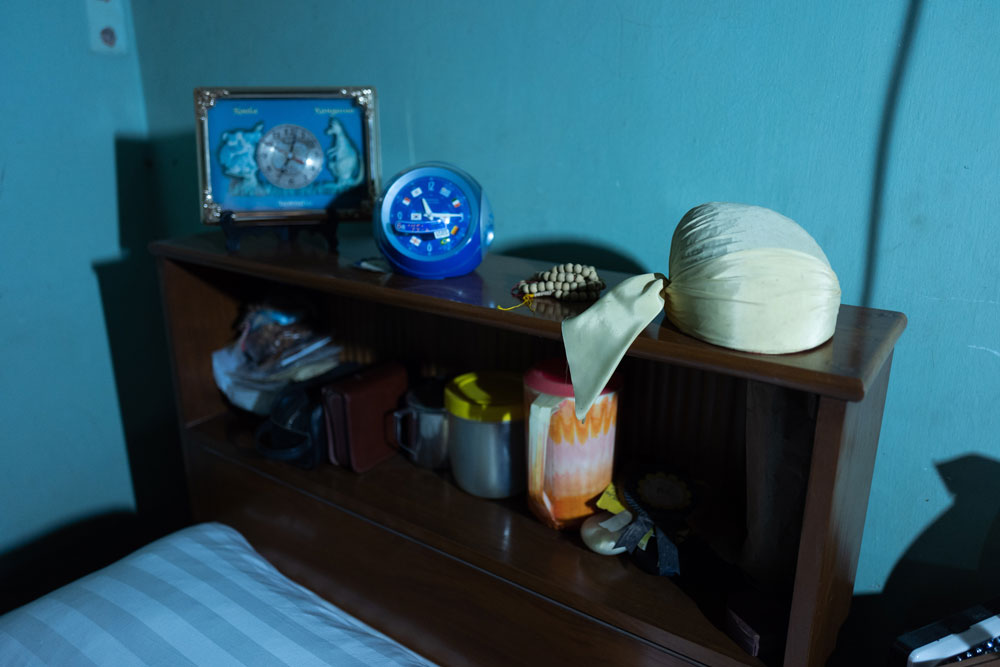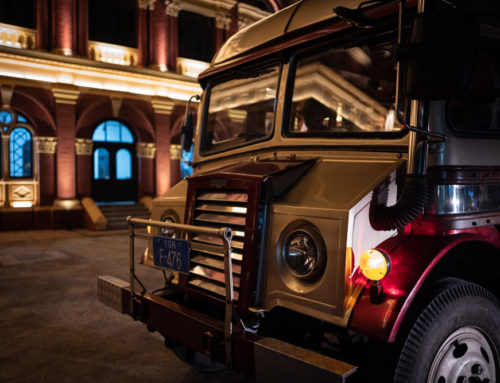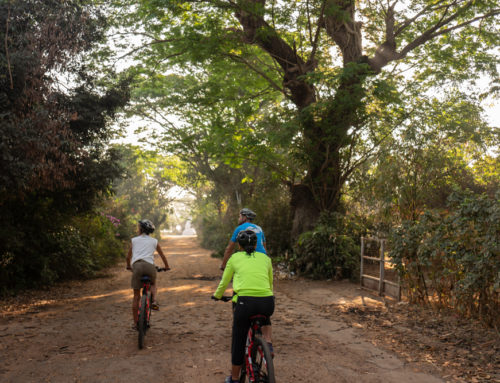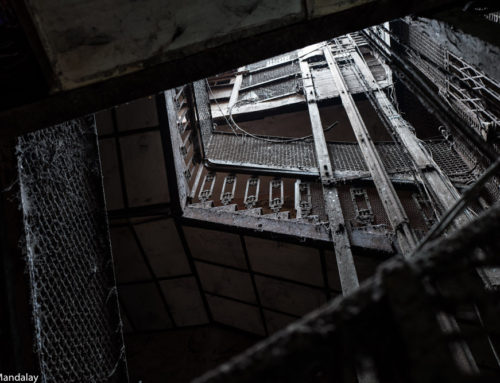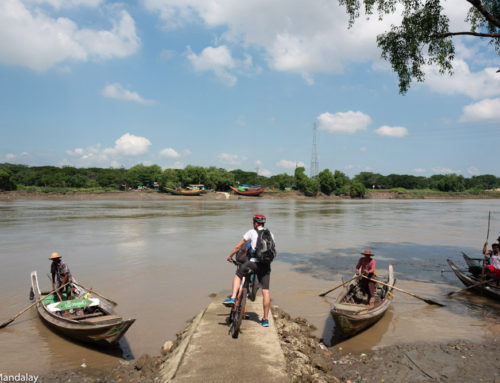THREE POLITICAL LEGENDS
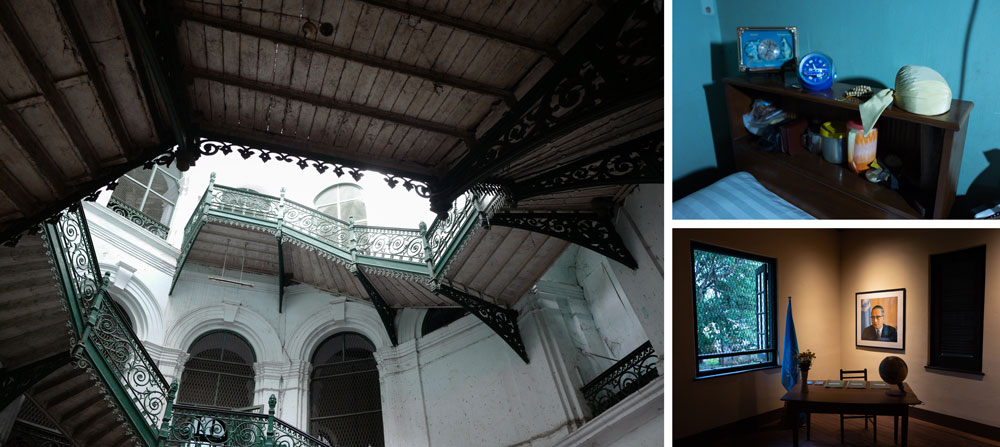
![]() OVERVIEW
OVERVIEW
In 2015, Myanmar witnessed its first free and fair general election, the result of which, saw Daw Aung San Suu Kyi’s National League for Democracy party (NLD) take one step closer to bringing about genuine democracy to a country that’s historically tended to prefer an autocratic way of rule. The last 250 years for example, has seen the rise and fall of powerful warrior kings, three stages of British colonial rule, Japanese occupation and a small handful of military dictators. When you consider the country’s been relatively unstable for most of this time, it becomes a little bit easier to understand why so much friction and internal divide exists to this day.
As per General Aung San’s speech given at the first Panglong conference on 11th February 1947, “If you want to have a developed state, you have to strive to be united with your strength, finances and facilities. If you are divided into various groups like Bamar, Kayin, Shan, Kachin and Chin separately, it is less effective. Only unity amongst ourselves will be beneficial”. That 70-year-old statement still holds true to this day, although it’s easier said than done when your country’s two times the size of Germany and home to myriad ethnic groups other than the five mentioned.
A common misconception is that Daw Aung San Suu Kyi was Myanmar’s first hope at democracy, when in fact, democratic reform has been brewing away in the background for quite some time now. Wanting to get to the bottom of the country’s democratic foundations, this tour focuses on exploring the lives of three influential Myanmar political legends; General Aung San, U Nu and U Thant.
![]() PACE
PACE
Easy going
![]() TOUR PERIOD
TOUR PERIOD
Full day (Fridays and Saturdays only)
![]() HIGHLIGHTS
HIGHLIGHTS
- Step inside the Secretariat, an important heritage building that’s long been off limits to tourists.
- Gain access to the Parliament House, a building in which General Aung San would have regularly engaged in political debate.
- Follow in the footsteps of the four assassins who broke into the building and took General Aung San’s life, along with six cabinet members, a cabinet secretary and bodyguard.
- Stop to talk politics at a tea shop located opposite Ghandi Hall, a building that was purchased by Prime Minister U Nu in 1951.
- Visit the home General Aung San lived in from 1945 to the time of his assassination.
- Enjoy lunch at House of Memories, once General Aung San’s office.
- Visit the house of Myanmar’s first Prime Minister, still lived in by his family to this day.
- Finish the day at the mansion of U Thant, former United Nations Secretary-General and arguably Myanmar’s most famous human export.
![]()
ITINERARY IN DETAIL
(Click to read)
This morning you’ll be collected from your hotel and driven to the majestic Secretariat Building in time for a 09:30 shared tour. Sometime referred to as the Ministers’ Building, Myanmar’s grandest colonial relic was the home and administrative seat of British Burma. Nowadays, it is perhaps remembered less for that and more for General Aung San, his six cabinet members, a cabinet secretary and a bodyguard; on 19th July 1947 a gang of armed men burst into the building and assassinated them during a meeting of the Executive Council. Once inside, we’ll learn more about the reasons behind the targeted assassination, whilst taking time to explore the gutted interior of a colonial gem that’s long been off limits to the general public.
Other than being Aung San Suu Kyi’s father, General “Bogyoke” Aung San is still revered to this day for bringing about the country’s independence. This was agreed by General Aung San and British Prime Minister Clement Attlee on 27th January 1947, although it wasn’t until the 4th January 1948 (after General Aung San’s assassination) that permission was granted. In line with the dictates of astrology, the Union Jack and Union of Burma flags were interchanged at exactly 04:20 in front of Parliament House, a single storey building, which can be found in the centre of the Secretariat compound. Winston Churchill had publicly labelled General Aung San, “a traitor rebel leader” for temporarily siding with the Japanese, so it was lucky for Myanmar that the sharp-tongued Conservative leader wasn’t elected for a second consecutive term; if he had been, it’s likely that ceremony would have never taken place.
Even though evidence clearly indicated that U Saw, a leading politician and Prime Minister of British Burma, was the ringleader of General Aung San’s assassination, many people believe he had support from the British.
Reason one: The British were still angry at him for double crossing them with the Japanese during the Second World War; it was this that ultimately led to them losing control. Even though the allied forces reoccupied the country in 1945, the Burma Campaign had ravaged Burma and it would inevitably take a lot of time and money to repair (not ideal after one of the costliest wars in human history). Having lost what would have been an excellent trading route between India, China and Thailand, it’s no wonder why people like Winston Churchill (whose father Randolph, ordered the Third Anglo-Burmese War for exactly that reason) were bitter.
Reason two: General Aung San came close to uniting the country, which was a miracle considering all of the colonially created divisions; the Kachin and Kayin for example fought loyally alongside the allied forces, and without their support, it would have been a lot more difficult for the British to exert influence.
Reason three: Aung San was also the founding member and first Secretary General of the Communist Party of Burma (CPB) and there were fears that he might look to reunite. At the time, communism was seen as a huge threat to Western Ideals, so that wouldn’t have helped his case either.
There are plenty more possibilities out there, but we’ll leave you to discuss these with your guide. One thing’s for sure, nothing’s black and white and you can’t help but wonder what Myanmar would be like today if the 32-year-old’s life had been spared. Would General Ne Win have staged a coup d’etat in 1962? Would there have been genuine unification? What would have happened to Aung San Suu Kyi; would she have still chosen to get involved with politics? As the founder of the Tatmadaw, what role would the military have played in General Aung San’s government?
Having followed the assassins’ trail through the Secretariat, from the stairs they rushed up, to the room in which General Aung San fell, we’ll take a short drive to a cosy tea shop located across the road from Mahatma Gandhi Hall. Interestingly, the building in which the tea shop is located (501 Merchant Street), was restored by Turquoise Mountain back in 2016, a foundation supported by HRH the Prince of Wales. Remarkably, they did this without having to evict any of the existing residents or commercial businesses. Furthermore, over 250 people were trained in traditional building techniques, which will be sure to benefit Yangon’s wider community for a long time to come.
Mahatma Gandhi Hall was first used as the office for the Myanmar Times, the country’s most popular English newspaper, until it was bought by Prime Minister U Nu and the Indian Ambassador in 1951. Although Gandhi never visited the building, it was named in his memory after he too was assassinated on 30th January 1948. We’ll return to U Nu later, but for now, feel free to sit down with your guide and talk about Myanmar politics over a cup of tea – even during the days of strict censorship, this has long been a popular past time (although now you don’t need to worry as much about who’s eavesdropping).
Driving north, we’ll now visit the colonial mansion in which General Aung San and his family lived from May 1945 until his assassination. The family continued to live here until the death of Aung San Lin, Aung San Suu Kyi’s brother, who sadly drowned in the ornamental pond at the bottom of the garden. In contrary to Michelle Yeoh’s film The Lady, which begins with General Aung San telling Aung San Suu Kyi a story in the grounds of a lakeside mansion, it was not until much later that the grief-stricken family would find themselves here. The lakeside mansion is also the same property in which Aung San Suu Kyi would spend a total of 15 years under house arrest.
In 1955, plans were made to transform the house into a public museum in honour of General Aung San; it would have stood relatively bare until Daw Khin Kyi, Aung San’s beloved wife, donated 53 pieces of furniture and other family memorabilia in 1957. Although nowadays it feels more like an ageing museum than it does a home, a visit here’s well-worthwhile as it shows off a more intimate side of Myanmar’s supposedly traitorous independence hero. For example, on a table close to the entrance, there’s a note from General Aung San to Daw Khin Kyi that reads, “If possible, I’d like to have some naan with steamed yellow beans please”; this indicates he was still very much fond of ordinary tastes in spite of his fame and wealth. Upstairs you’ll also find original copies of the books he would have read, his iconic British Army issue greatcoat and many photographs of the family together.
Having surely worked up an appetite, we’ll now drive across town to the popular House of Memories Restaurant for lunch (please note, this is not included in the price of the tour). More than just a restaurant, the century old building served as General Aung San’s office when the Burmese Independence Army (BIA) was headquartered here from 1941 onwards. Formerly the home of the late Indian Independence Army’s chairman, Dina Nath, it is said that many a secret meeting took place here between Burmese and Indian leaders during the struggle for independence. Step inside General Aung San’s office and black and white photographs of some of these individuals can be found hung on the walls.
From here we’ll now drive across town, passing by Yangon University (formerly Rangoon University) en route.
General Aung San and U Nu (Myanmar’s first Prime Minister) attended Rangoon University together; it was here in 1936 that they were both threatened with expulsion for refusing to reveal the author of “The Hell Hound at Large”, a university magazine article that clearly poked fun at the Rector. This led to the second Rangoon University student strike, which eventually saw their expulsion revoked. After university, they went on to join Dobama Asiayone, or We Burmans Association, a nationalist group formed by other likeminded, anti-colonial intellectuals. Also known as the Thakins (“Masters”), a term the Burmese were required to use when addressing the British, thirty members from this group (including General Aung San) would side with the Japanese, eventually helping them to take Burma from the British in 1942. Little did they know, the Japanese had no intention of giving the country full independence either, which is part of the reason they ended up siding once again with the British in 1945.
At the time, Rangoon University would have been up there with the top educational establishments of the day. After the military coup of 1962, the university’s reputation quickly dwindled however, with most international bodies refusing to recognise any degrees issued or obtained here. Then in July, dozens of students were killed on campus after peacefully protesting against unjust university rules; at the same time, the historic Rangoon University Student Union, where General Aung San, U Nu and other Thakins would have regularly gathered to discuss politics, was also destroyed. 11 years later and on same site, more students were shot after they snatched the body of UN Secretary General U Thant; they made a mausoleum here after the government refused to honour Myanmar’s most famous human export with a state funeral.
Since 2011, there has been a renewed focus on education, so fingers crossed it won’t be long until the university’s once prestigious international reputation is reinstated.
To borrow some words from Barack Obama, when he made a speech here in 2012:
“I came here because of my respect for this university. It was here at this school where opposition to colonial rule first took hold. It was here that Aung San edited a magazine before leading an independence movement. It was here that U Thant learned the ways of the world before guiding it at the United Nations. Here scholarship thrived during the last century and students demanded their basic human rights. Now your parliament has, at last, passed a resolution to revitalise this university and it must reclaim its greatness because the future of this country will be determined by the education of its youth.”
Continuing on, we’ll now make our way to U Nu’s house, passing via the front gate of 54 University Avenue; this is the aforementioned lakeside mansion Aung San Suu Kyi spent 15 out of 21 years under house arrest. We won’t stop here, but your guide will be sure to point it out.
U Nu’s political career started as the president of the Rangoon University Student Union (RUSU); at the same time, General Aung San was a member of the executive committee and editor of RUSU’s magazine, Oway (Peacock’s Call). As mentioned previously, both would find themselves joining the Dobama Asiayone, henceforth gaining the prefix ‘Thakin’. U Nu would go by the title Thakin Nu until the country had been fully granted independence and he deemed the title no longer necessary.
Whilst General Aung San and other Thakin, also known as the Thirty Comrades, received secret military training from the Japanese in 1940, U Nu and other influential “troublemakers” were jailed by the British for sedition; he would be released shortly after the Japanese invaded with General Aung San. The Japanese would eventually offer partial independence to the country under a regime led by Dr. Ba Maw, in which U Nu would serve as foreign minister followed by minister of Information.
On 27th March 1945, General Aung San would lead the Burma National Army (what the Burma Independence Army renamed to after being granted nominal independence) in a revolt against the Japanese. Even though they knew about the rebellion and remained in contact with the BNA’s leaders, U Nu and Dr. Ba Maw would remain with the Japanese army until they surrendered in August 1945. Following this, U Nu would take a short break from politics to write his memoirs, ‘Burma Under the Japanese and tracts on Marxism’. In the preface to the English edition of the book, U Nu wrote:
‘BEWARE OF PIED PIPERS! This, as I look back on the past before the war and afterwards, seems to me the moral of this little book.
Before the war so many Burmans were so ready to follow the seductive piping of the Japanese without realizing at all in what direction it was leading us. And it led us to the Japanese occupation and to the oppression that we suffered under Japanese rule.
Yet even now it seems that many of us have not learned the lesson. All over the world pipers are chanting new tunes that open up entrancing visions of imaginary wonderlands. These tunes find their way to Burma and men and women who are deluded by them stir up trouble in various ways that would only bring ruin to the country. They are like foolish children who listen to their aunt rather than to their mother.
So I hope these sketches of life in Burma under the Japanese will help to teach my countrymen not to follow in the train of these pied pipers, however seductively their tunes may strike the ear.’
Following General Aung San’s assassination, U Nu would be asked to become the head of the country’s leading political party, the Anti-Fascist People’s Freedom League (AFPFL); this was a party made up of the Communist Party of Burma, the Burma National Army and the People’s Revolutionary Party. He would then go on to sign the independence agreement in place of General Aung San in October 1947. As soon as independence was declared, U Nu became the country’s first Prime Minister, staying in power for almost a decade.
In the 1950s, U Nu, along with his Secretary U Thant, played a significant role in promoting the Nonaligned movement, a group of states sharing the peacetime policy of avoiding political or economic affiliations with major power blocs; doing this would help Myanmar, and other countries dealing with post-colonial fallout, to avoid future “seductive pied-pipings”.
Both at home and abroad, U Nu was highly respected, but his government was plagued with communist and ethnic-minority group insurrections, economic stagnation, and administrative inefficiency. This, coupled with over 120 years of foreign administration under the British and Japanese left the country in a state that it’s still yet to recover from. With growing social instability came the need to restore order using the help of the military; in stepped General Ne Win as a caretaker governor. He would initially do this for two years from 1958 to 1960, before U Nu was re-elected and a civilian government reinstated. With the general consensus being that the government was inept at ruling the country, Ne Win again seized power in a military-staged coup d’état. U Nu was put in “protective custody” for four years in an army camp outside of Yangon.
Following his release, U Nu would leave Myanmar with the aim of conjuring up a resistance movement. When this plan failed, he took up residence in India until he accepted an offer of amnesty granted by Ne Win in 1980. He would then keep a low profile becoming a monk and teaching Buddhism in Myanmar and the United States. After the 8888 uprising (a large protest started by students, which would lead to the resignation of Ne Win), he once again became politically active forming the first new political party in decades, the League for Democracy and Peace (LDP). When asked by the army to formally abolish his interim government, U Nu refused, which ended up with him being put under house arrest from 1989 to 1992. He was released just in time to see Senior General Than Shwe sworn into power.
U Nu would pass away quietly of natural causes on 14th February 1995. Stepping inside his home you will see his bedroom as it was left, a grand Buddhist alter, a make shift family image gallery and an outdoor shrine assembled in honour of some of U Nu’s most notable personal achievements. His bedroom is particularly interesting as you’ll find a range of souvenirs from Australia and Japan displayed alongside a vintage pen holder from Vice President Richard Nixon. These were gifts from family members, some of whom were educated and lived overseas; seeing these tells us that U Nu did not end his life being completely shut off to the ways of ‘The West’ and Japan. To get a better sense of this renewed acceptance, you may wish to strike up conversation with some of his family whom still reside there.
To reach the final stop of today’s tour, U Thant’s house, it will be necessary to travel back across town via Golden Valley, one of Yangon’s wealthiest (and most pot-holed!) suburbs. Renovated in 2013 with the help of Yangon Heritage Trust (YHT), this is the grand colonial mansion in which the former UN Secretary General would have lived whilst serving as Secretary to U Nu. As per YHT’s website, ‘In early 2012, President U Thein Sein approved a request from YHT Chairman Dr. Thant Myint-U that the house be renovated for reuse as a museum dedicated to the life of U Thant, as well as a centre for public events, such as lectures and seminars, on issues related to the former Secretary General and his work.’
Arguably the most internationally influential Myanmar person to have ever lived, U Thant’s two terms at the United Nations spanned from 1961 to 1971. His main claim to fame was facilitating negotiations between John F. Kennedy and Nikita Khrushchev, which would eventually see to the end of the Cuban Missile Crisis in 1962. In the same year, he’d also authorise Operation Grand Slam (a military offensive, which ended a secessionist insurgency in Congo) and watch from a distance as Prime Minister U Nu was ousted and martial law was declared across Myanmar; this and more information about the life and legacy of U Thant can be found displayed on the walls of the restored mansion.
During the Japanese occupation, U Thant headed the Educational Reorganising Committee, but similar to General Aung San, quickly grew frustrated after realising that he had very little control or influence. He would then return to his hometown in Pantanaw, before cooperating with the growing anti-Japanese resistance; this happened when the Japanese ordered for all high schools to make Japanese language a compulsory part of the country’s national curriculum.
In the years following the Second World War, U Thant would act as the go-between between the newly independent Burmese government and the independent state seeking Karen (one of the country’s largest ethnic groups, also known as Kayin), almost risking his life in the process. Sadly, his negotiation attempts would fail and the subsequent civil war that broke out still continues to this day. There was little U Thant could have done to pacify the situation; the British had pitted the Karen against the Bamar (the dominant ethnic group in Myanmar) since the First Anglo-Burmese War. In 1887, Donald Mackenzie Smeaton provides us with a good example of this in his book, The Loyal Karens of Burma:
‘PROBABLY few of those who have read the newspaper telegrams and narratives of the rebellion in Lower Burma, are aware that a neglected little nation called Karens, inhabiting the mountains and forests of the province, have been the staunchest and bravest defenders of British rule. But for the loyalty and courage of the Karens, the rebel Burmese and Shans would, in all probability, have overrun Lower Burma.’
The division between the Bamar and the Karen intensified when the Japanese used General Aung San’s Burmese Independence Army (BIA) to control the country; the group purposely excluded any non-Bamar ethnic groups because most were associated with the British. Having been promised by the British that they would be rewarded with an independent state if they continued the resistance against the Japanese, they felt understandably let down when this deal didn’t materialise. A similar situation unfolded in Myanmar’s Kachin State, with civil war having taken place intermittently there since 1961.
By siding with the Japanese and bringing the Second World War to British Burma, did General Aung San unintentionally leave the country worse off? It had the potential to be a more successful colony than either Singapore or Hong Kong, but the war ravaged most of the country’s infrastructure and further exacerbated ethnic tensions.
What could U Nu have done to revitalise the country’s economy, smooth over ethnic tensions and avoid the eventual military coup d’etat? Could he have taken a leaf out of the late Lee Kuan Yew’s book?
Being so high up at the United Nations, is there more U Thant could have done to bring about institutional change in Myanmar from abroad? Or did these immense responsibilities mean that he was unable to prioritise Myanmar’s struggle?
With the benefit of hindsight, it’s easy to be critical of General Aung San, U Nu and U Thant.
With no sign of British rule coming to an end, resources being exploited, intensified ethnic fragmentation and the country’s morale still battered after the Third Anglo-Burmese War, what was General Aung San supposed to do? When would the next opportunity to gain independence from the British come about? He also pushed hard to bring about nationwide unification; the Panglong Conference and the multi-ethnic cabinet members he was assassinated alongside with are proof of that.
After Aung San’s untimely death, U Nu became Prime Minister of the newly independent Burma, most likely taking him by surprise. Whilst he had plenty of leadership experience, did he ever set his sights on the top position knowing full well this was always going to be reserved for General Aung San? As we saw in 1945, U Nu retreated from British Burma with the Japanese, suggesting he was more of a loyal follower than he was an independence-seeking risk taker. He also took a short break from politics after the Second World War, whereas General Aung San dived straight back into it. Whilst there’s no denying he had the skills required to be an effective Prime Minister, bringing the country together at that time would have required someone with a heavy, but fair hand, and considerable influence over the military (General Ne Win had immense respect for Aung San).
U Thant was the most diplomatic of all Myanmar politicians, which explains why he was unanimously elected as the Secretary General of the United Nations for two consecutive terms. What difference would he have made to Myanmar if he’d continued to serve as U Nu’s Secretary? There’s no doubt he would have still been influential, but what would have happened to him after the coup d’etat? It’s most likely he’d have been relegated to the back pages of the state-controlled newspapers. His international fame and ability to examine both sides of the story without bias saw him gain immense respect, especially amongst the country’s students. These students would later sacrifice their lives, on multiple occasions, to set Myanmar on a path towards democracy.
Studying together at Rangoon University aside, General Aung San, U Nu and U Thant had one very important thing in common; they each helped to bring politics to the people. Before 1947, the people of Myanmar had never experienced what it was like to be truly independent; prior to this, you had Japanese rule, British rule and a thousand years or so of absolute monarchy. Witnessing three men from humble origins ascend the country’s societal ranks and fill real positions of power would have surely been an unimaginable sense of national pride. Even during the darkest years of military dictatorship, it was this pride and reverence that sparked light and the strength to fight bullets with words, time and time again.
![]()
INCLUSIONS
- Transportation to/from hotel in an air-conditioned vehicle
- Entrance fees
- Tea in a tea shop (other drinks will need to be purchased separately)
- English speaking tour guide (for other languages, please enquire)
- Drinking water and hand towel
![]()
EXCLUSIONS
- Lunch at House of Memories
- Anything not mentioned
![]() NOTES
NOTES
- This tour is available on Fridays and Saturdays only (and assuming no national holidays are taking place).
- The tour of the Secretariat is shared, not private.
- Should you wish to stop at the tea shop, the cost of tea is included only – other beverages will need to be purchased separately.
- You will be expected to take your shoes off in General Aung San and U Nu’s house – wearing footwear that is easy to slip on and off comes highly recommended.
- Should you wish to eat at an alternative venue, please run it past your guide and we will do our best to accommodate.
- A supplementary fee may apply on certain days – Tour Mandalay will inform you of this beforehand.
![]() PRINT
PRINT
![]() LOCATION
LOCATION

